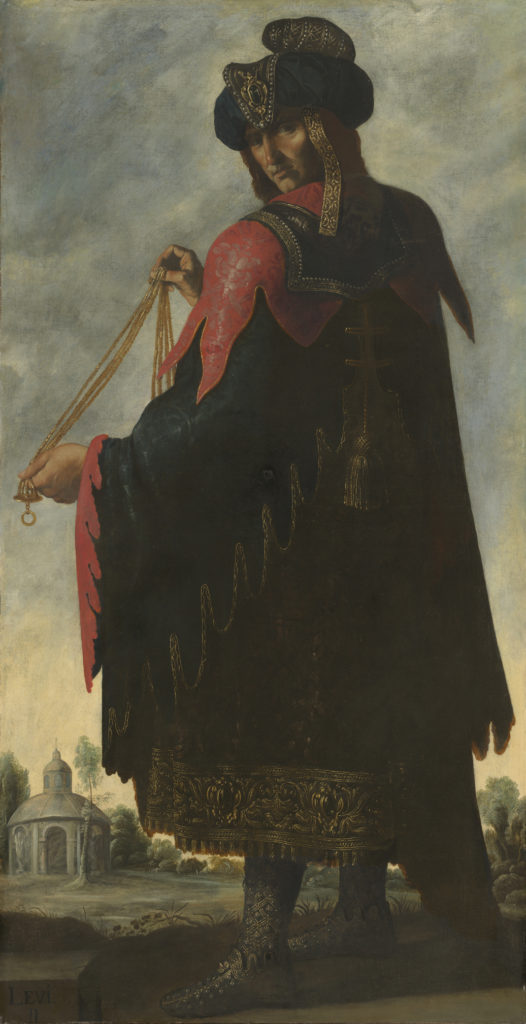The Meadows Museum at Southern Methodist University is currently exhibiting Zurbarán: Jacob and His Twelve Sons, Paintings From Auckland Castle, a noteworthy exhibition for a couple of reasons. First, the paintings are totally fresh to the American audience–only one of the 13, Benjamin, has been shown in the U.S. That was exactly 30 years ago, when the Metropolitan Museum* presented Zurbaran, a comprehensive show of his works, in fall 1987.
 Second, as I write in my review of the exhibition for The Wall Street Journal, which was published today, you will, if you go to the Meadows, “see Francisco de Zurbarán (1598-1664) in a new light.” (That’s among other things–as you will see in the review.) The paragraph says:
Second, as I write in my review of the exhibition for The Wall Street Journal, which was published today, you will, if you go to the Meadows, “see Francisco de Zurbarán (1598-1664) in a new light.” (That’s among other things–as you will see in the review.) The paragraph says:
These paintings date to the 1640s— near the end of the Spanish Golden Age—but they are unlike most Zurbarán works. They are naturalistic, but not as mystical, sculptural or intense. His palette here is more colorful; his lighting less dramatic. They feature not Christ, saints or monks, but Old Testament figures. And their commissioner is unknown, not an ecclesiastical patron; some speculate that they may have been intended for export to the New World.
The show is also noteworthy because of the presentation. The paintings that are the show’s focus fill only one gallery, albeit the main one and one that is quite large. But the exhibition includes four other galleries. The first is an introduction to Zurbaran and to the (art) world in Seville during his time there. The second is devoted to the print sources Zurbaran drew on to devise the costumes and poses of his 13 figures. Then comes the main gallery, followed by one devoted to the discoveries made by the conservation team at the nearby Kimbell Art Museum, which has been working on the paintings for a year. Finally, there’s a small gallery for a case study, illustrating what the analysis and research discovered about one particular painting–Zebulun.
The end result is, as I ended my review, “They greatly enrich the visitor experience and make “Zurbarán: Jacob and His Twelve Sons†a many-splendored thing.”
Not every museum would make the space for all those components. The Meadows is a teaching museum, after all. And not every museum has such space–the painting are coming to the Frick* this winter, and I am sure they will look fantastic in its East Gallery. But there’s no room for the other components, except perhaps as captured in a video (which I think is the plan).
See the show in Dallas if you can (visit the Meadow website for some content)–I gave more reasons in my WSJ review–and see it at the Frick too!
In the meantime, you can read my review on the Journal site using the link above, on Facebook, where I posted it for the public (not just friends), or on my personal website (for which there is a link on my bio page on this blog).
Photo credit: Courtesy of the Meadows Museum–the portrait of Levi, from the series
*I consult to a foundation that supports the Met and the Frick Center for the History of Collecting
